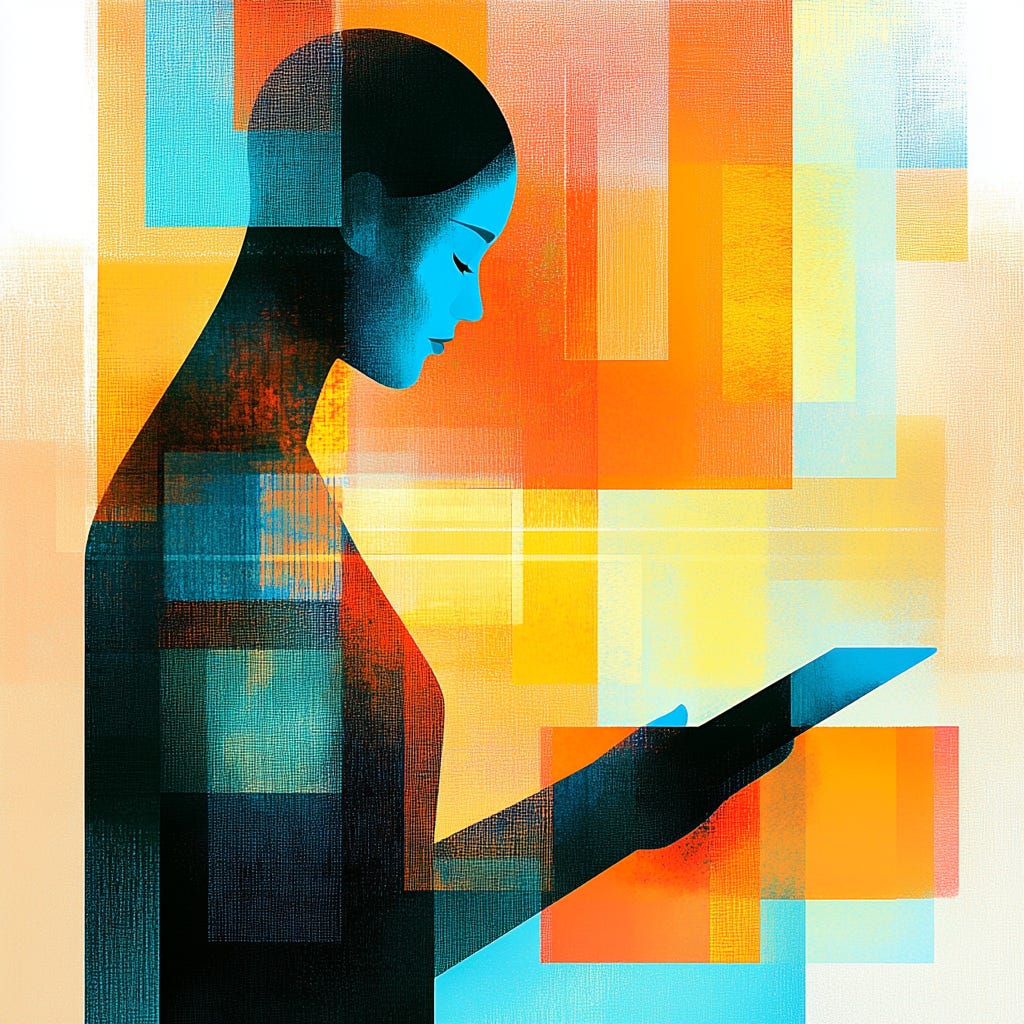6 ways I Use ChatGPT to SPEED UP my Projects
And get your very own Digital Project Manager, GPT.
For several months, I’ve been using AI in my workflow and it’s been an absolute game-changer.
I’ve saved TONS of time scoping out client briefs, creating Statements of Work, organising content inventories, writing user stories and planning retrospective workshops - to name a few use cases. All in a compliant way.
Now is the time to use this tech to your advantage and learn the skills that will be high on any hiring manager’s checklist of must-haves. So why not focus on the thinking - and have someone else be the ‘do’er’ for you?
By the end of this guide, you’ll have some great examples of how to use AI in your daily workflow AND as a BONUS - I’m giving you your very own Digital Project Manager GPT to practice with.
Now, on to the tips 👇
1. Automate Repetitive Tasks
One of my biggest time-wasters is repetitive tasks. Things like writing emails, drafting meeting agendas, updating status reports or creating project timelines.
Drafting emails: Whether it’s a client update or a team reminder, the GPT crafts professional, concise messages in seconds. Or funny one’s for that matter if you want to inject a bit of cheeky humour into that timesheet reminder.
Create timelines: Input the deliverables, deadlines, and dependencies, and the GPT generates a clear time plan - output in a common format like a .csv file you can import to Excel.
Prepare meeting agendas: I feed in key discussion points, and it creates a structured agenda to keep meetings on track.
Pro Tip 1: Save these outputs as templates for future use. Over time, you’ll build a library of resources that save even more time.
Pro Tip 2: As part of the original prompt, add in your own template and get ChatGPT (or your other favourite LLM) to output straight to that format.
2. Streamline Communication
Clear communication is critical for keeping projects on track. But let’s face it, sometimes you can end up staring at your screen trying to write the perfect email or status update.
AI makes communication effortless:
Summarise updates: The GPT turns complex project details into easy-to-understand updates for clients or stakeholders.
Polish messages: It checks for tone, clarity, and professionalism, ensuring every email hits the right note. Not to mention spelling!
Translate jargon: Have a non-technical client? The GPT rephrases technical language into something everyone can understand.
Example: I recently used it to rewrite a developer’s technical notes into a client-friendly update. The feedback? Actually, I didn’t get a response. But hey, sometimes clients are just like us: super busy.
3. Write User Stories and Test Cases
Every Agile project needs solid user stories and test cases. But writing them thoroughly takes time, brainpower and zero interruptions for a couple of hours.
Here’s how I use AI to make it simpler:
Describe the project’s goals and requirements.
List out the features
Ask the GPT to generate user stories in this format:
“As a [user], I want to [action], so that [benefit].”
Use the same input to create detailed acceptance criteria or test cases. You can even ask the GPT for content or features that you or the team may not have even thought of.
The result? Well-structured stories and test cases in minutes instead of hours.
4. Brainstorm Creative Ideas
Who said only creatives can come up with ideas?? PM’s can too. Oh yes, oh yes!
ChatGPT (and my customised GPT) will blow your mind when it comes to idea generation. It could be for writing a best practice prompt for a campaign concept using Adobe Firefly, a website design, or maybe a content or SEO strategy.
An example landing page prompt:
“Design a $10 million landing page targeting [audience segment/persona], with the objective being to sign up as many users as possible.
Include a detailed breakdown of the following elements:
Content: Specify the value propositions, key messages, headlines, and supporting content that resonate with the target audience.
Layout: Outline the layout structure, including hero sections, product/service highlights, testimonials, and calls-to-action.
UI Elements: Describe interactive features, design principles, and navigation elements that enhance user experience.
Aesthetic Design: Highlight colour schemes, typography, and branding guidelines tailored to the audience.
Technical Features: Mention essential performance metrics like load speed optimization, mobile responsiveness, and SEO considerations.
Finally, make sure all recommendations are accessible to WCAG AA compliance.
Your response should reflect the level of sophistication, design, and strategy required to achieve a $10 million impact, keeping the specific audience’s preferences and behaviours in mind.”
It’s like having a brainstorming partner with endless ideas, also based on industry best practices.
5. Learning on the go
To be a great project manager, you need to be what I call an “ultimate generalist”.
You need to have just the right amount of knowledge of everything, from content and design, to agile frameworks and technical specs. To name but a few.
AI can help you stay sharp by providing instant insights on topics you need to brush up on.
For example:
Need to explain “sprint planning” to a client? The GPT can give you a quick, clear definition.
Need to know the most up-to-date mobile phone device usage per country? Ask the GPT for the latest data.
What used to take 20 minutes, now takes two.
6. Tackle Technical Challenges
Ever felt stuck in a discussion with developers? Do they send you a load of code on Teams when all you want is a yes or no? (mine do btw).
AI can 10x your technical knowledge in an instant. Bye bye searching through dozens of web pages. “Laters potatas” to out of date books.
Let me give you a few examples:
When discussing APIs, I’ve used the GPT to generate questions like, “What are the expected response times for this integration?”
What is a CI/CD pipeline?
Received a load of acronyms from a client's data analytics team? Chuck them into GPT, mid-call, and suddenly you know what they are talking about.
It’s also helped me clarify project briefs by suggesting details I hadn’t considered.
Introducing the Digital Project Manager GPT
All the examples above are powered by my Digital Project Manager GPT—a custom AI assistant I’ve built specifically for our industry.
It combines everything I’ve learned from managing hundreds of digital projects into an AI that understands the unique challenges of agency life.
I want you to remember some simple rules that apply to ANY AI:
Never upload confidential information.
Make sure data sharing is turned off in ChatGPT settings - so the LLM doesn’t learn from your data.
Follow your own company guidelines.
For more tips on safe use, check out my article: The EU AI Act: 5 Tips That Every Digital Project Manager Needs to Know Before Using AI Tools
Final Note. For now, I’m keeping access to the DPM GPT exclusively to The Wash-Up readers, so it’s not yet live on the ChatGPT store.
You can find Digital Project Manager GPT (for free) sitting nice and snug in my Substack. I’m also working on a Project Manager Prompt guide, which I’ll let you know about soon.
Bookmark the page, and you’ll be able to get back to it quickly.
Any feedback you have would be greatly appreciated 🙏





